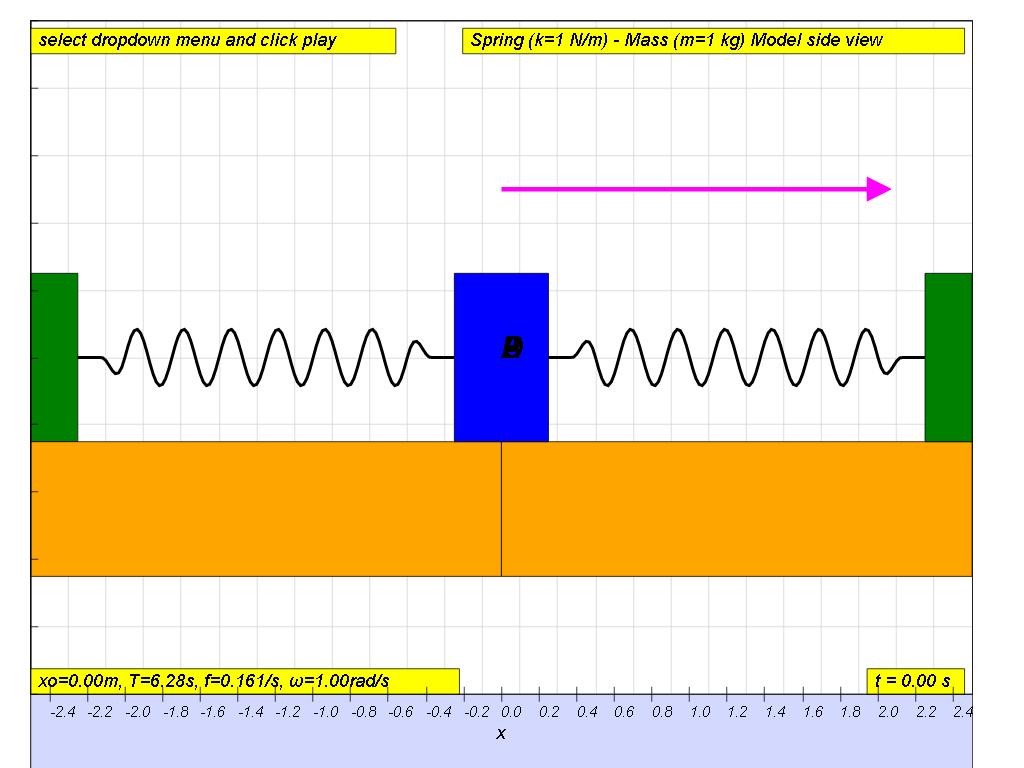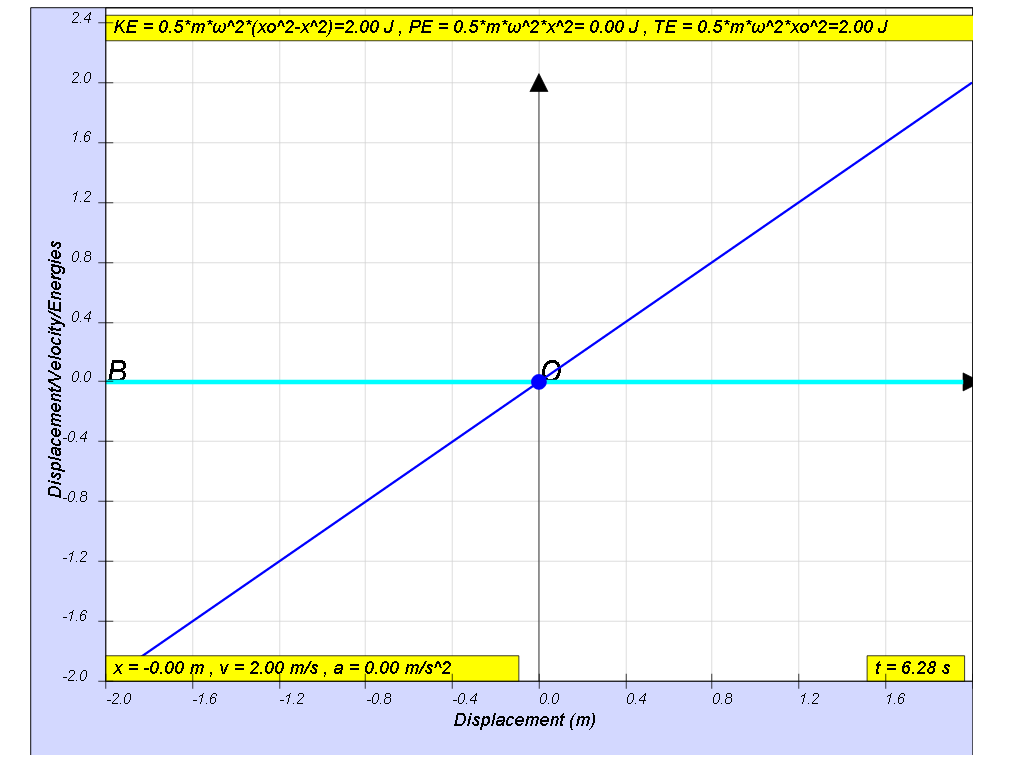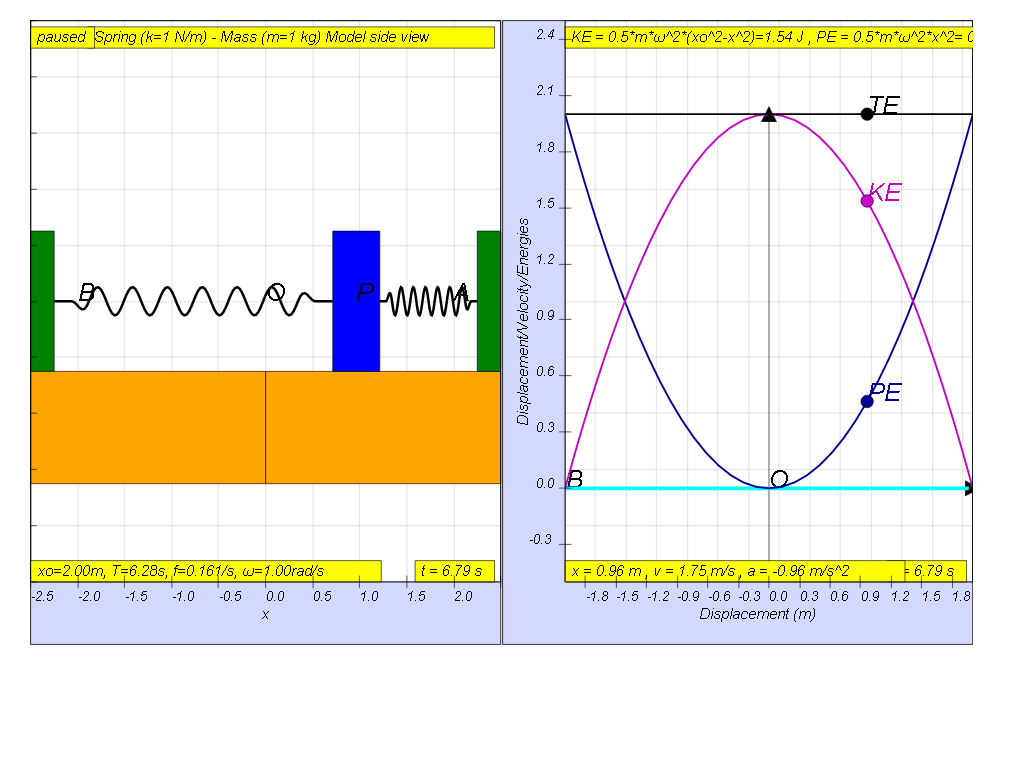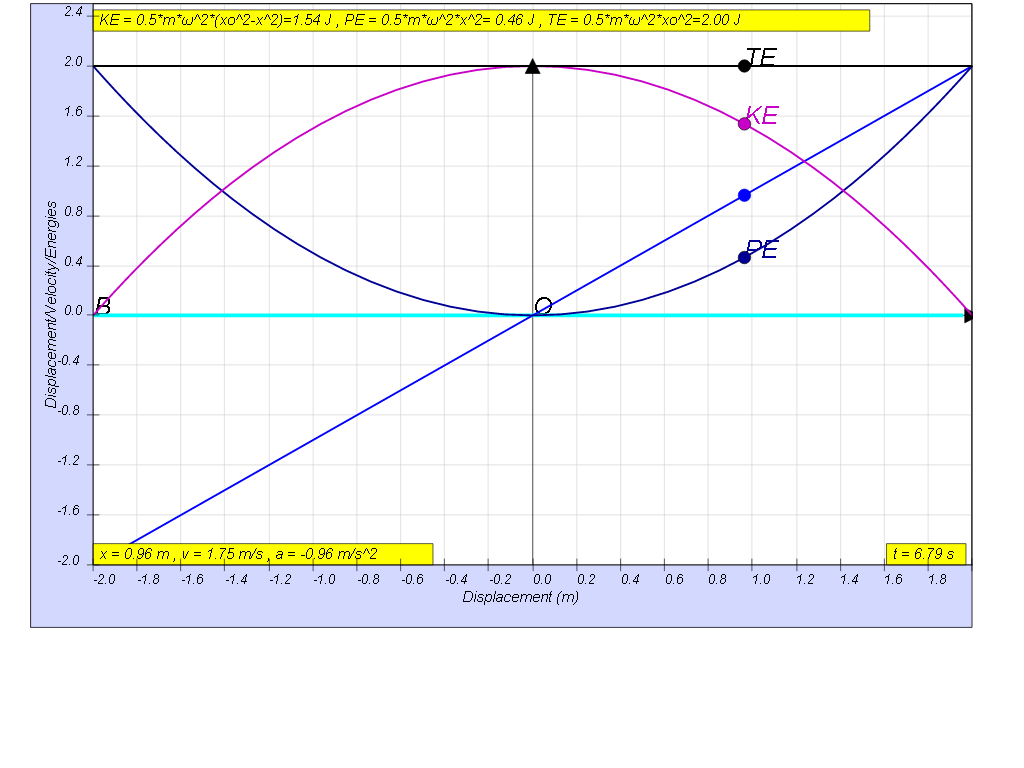




| general energy formula | SHM energy formula | when x = -x0 | when x = 0 | when x = x0 |
| KE = ½ m v2 | KE = ½ m ω2( xo2- x2) | 0 | ½ m ω2x02 | 0 |
| PE = ½ k x2 | PE = ½ m ω2x2 | ½ m ω2x02 | 0 | ½ m ω2x02 |
| TE = KE + PE |
TE = ½ m ω2( xo2- x2) + ½ m ω2x2 | ½ m ω2x02 | ½ m ω2x02 | ½ m ω2x02 |